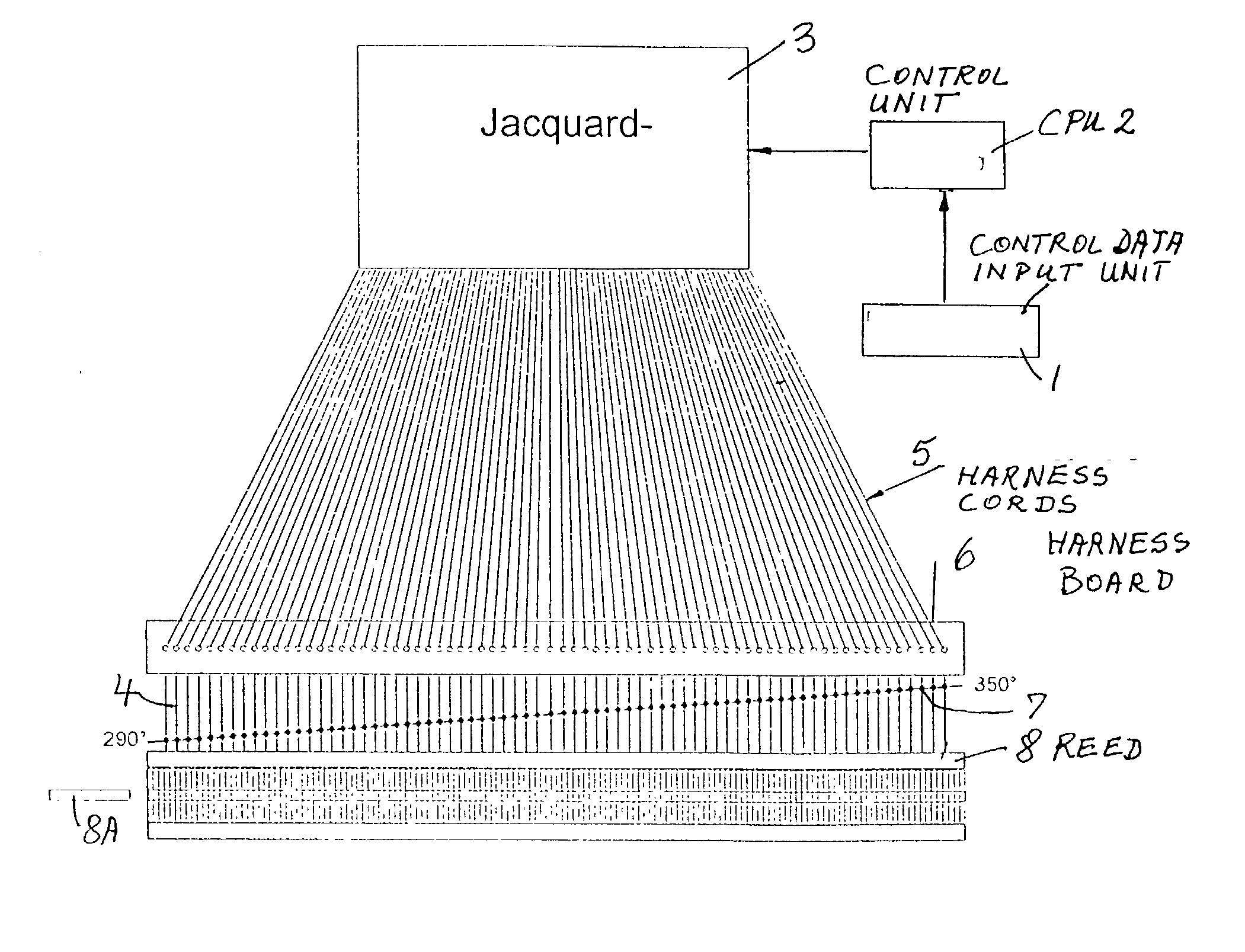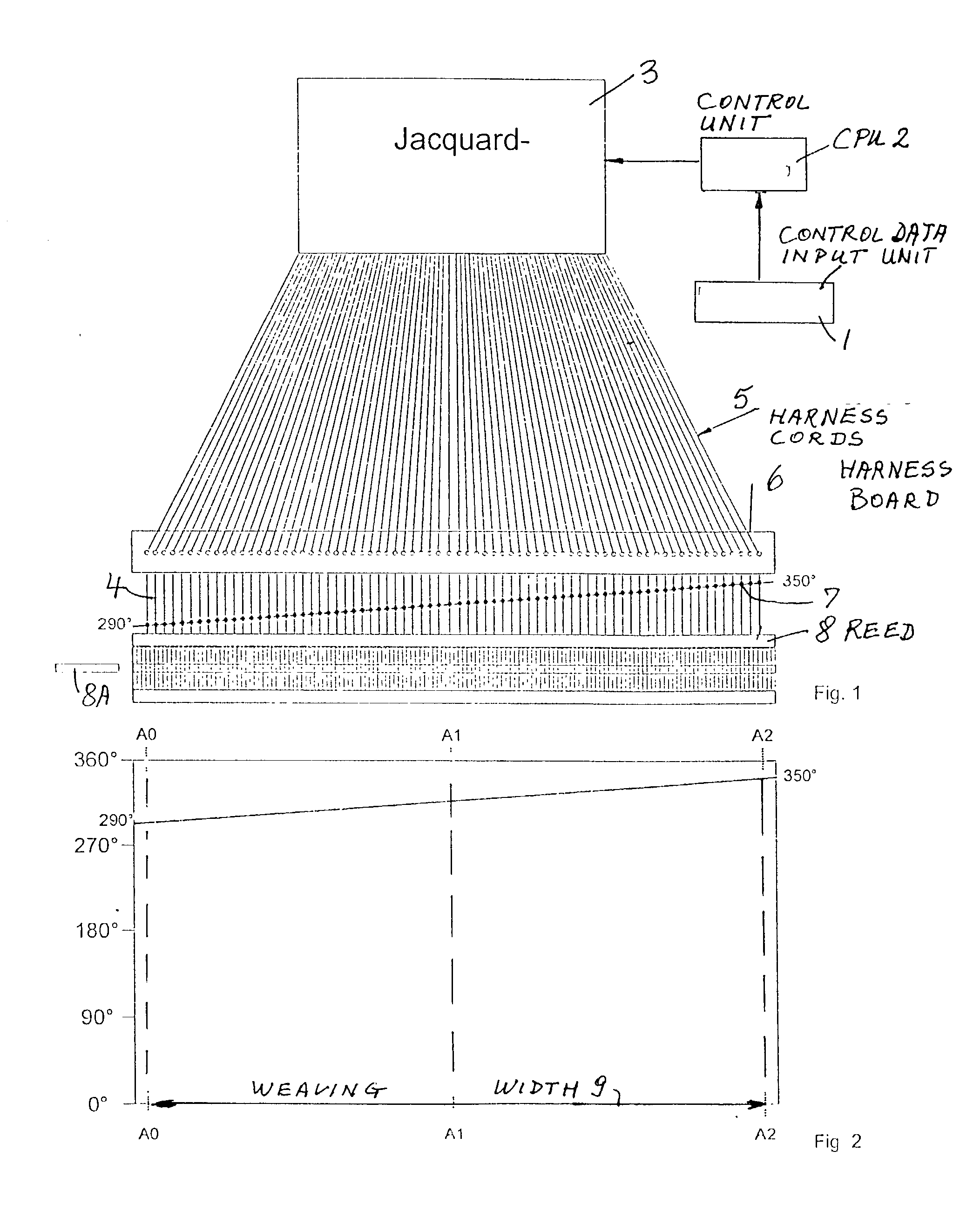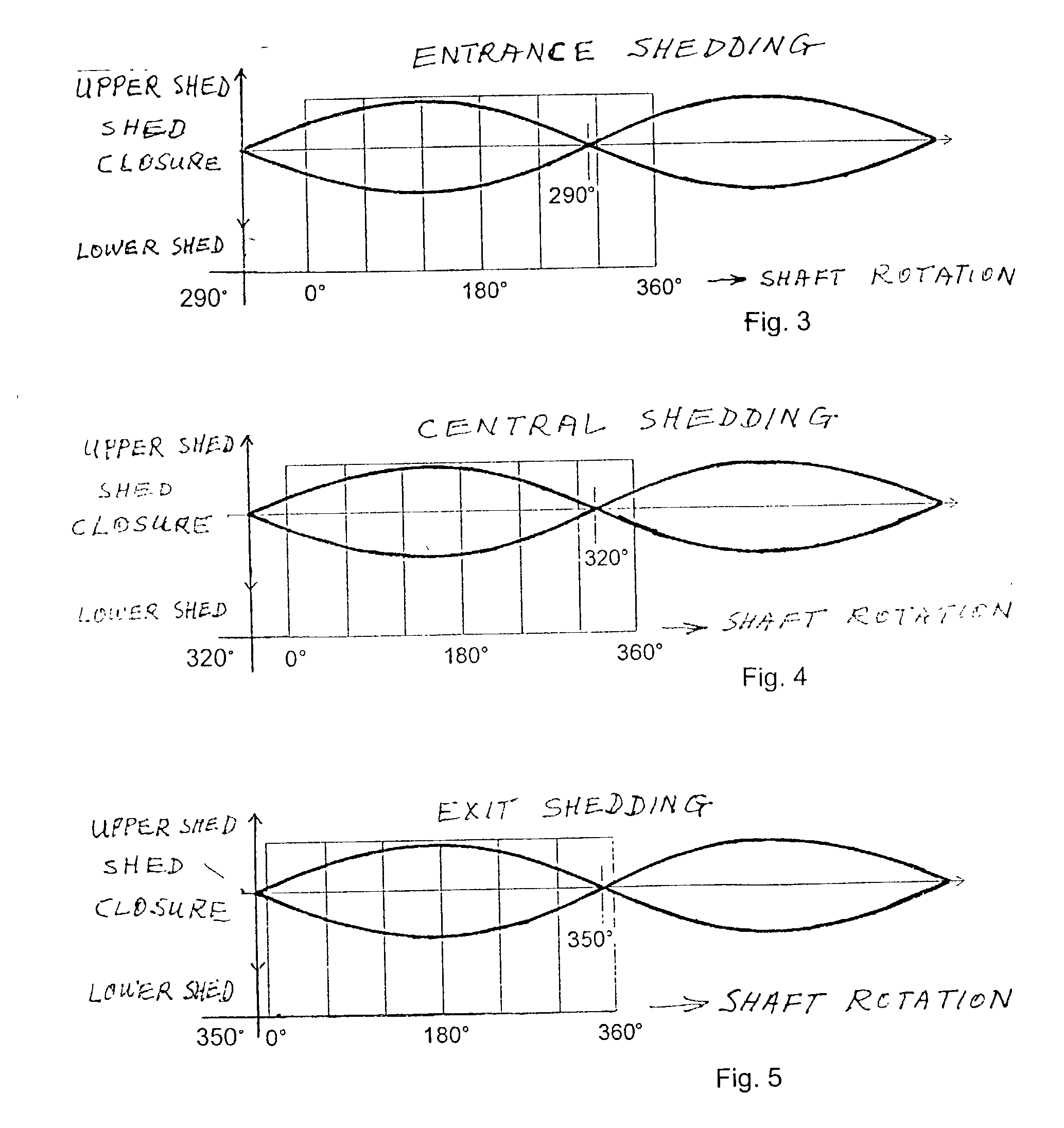Method for controlling the shed in a loom with fluidic weft insertion
a technology of weft insertion and weft, which is applied in the direction of looms, textiles and paper, jacquards, etc., to achieve the effects of reducing wear and tear, increasing the operational life of weaving looms, and increasing the operational li
- Summary
- Abstract
- Description
- Claims
- Application Information
AI Technical Summary
Benefits of technology
Problems solved by technology
Method used
Image
Examples
Embodiment Construction
[0034] FIG. 1 shows a schematic arrangement of the components of a loom with a fluidic weft insertion required for explaining the invention. A control data input unit such as a keyboard 1 is operatively connected to a central processing and control unit 2 which in turn is operatively connected to a jacquard 3 that individually controls the lifting and lowering of heddles 4 through respective harness cords 5. The harness cords 5 run through a harness board 6 and move the heddles 4 including warp holders 7, for example in the form of heddle hooks or heddle eyes for the shed formation simply referred to as shedding. At least one warp thread runs through each heddle eye 7.
[0035] In FIG. 1 all heddle eyes 7 are shown in a position along a dotted and slanted line extending between 290.degree. at a weft entrance and 350.degree. at a weft exit of the warp shed. These degrees represent rotation of a main loom drive shaft shown symbolically in FIG. 6 to be described below. A reed 8 performs a...
PUM
 Login to View More
Login to View More Abstract
Description
Claims
Application Information
 Login to View More
Login to View More - R&D
- Intellectual Property
- Life Sciences
- Materials
- Tech Scout
- Unparalleled Data Quality
- Higher Quality Content
- 60% Fewer Hallucinations
Browse by: Latest US Patents, China's latest patents, Technical Efficacy Thesaurus, Application Domain, Technology Topic, Popular Technical Reports.
© 2025 PatSnap. All rights reserved.Legal|Privacy policy|Modern Slavery Act Transparency Statement|Sitemap|About US| Contact US: help@patsnap.com



